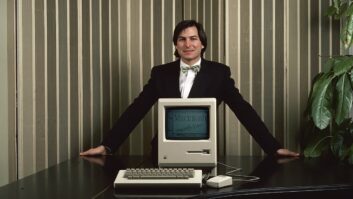R.I.P. hhgregg & Radioshack. Is Sears Next?
That shudder you felt last month was the closing of more than a thousand CE retail stores across the country.
The culprits were our industry’s own hhgregg and Radioshack, which finally ended their respective slow-motion spirals.
hhgregg, once a mighty multiregional CE, appliance, bedding and furniture chain, has now closed all its stores and website, leaving behind a holding page confirming that the company “is no longer in business.” The page links to Hilco Streambank, which is looking to auction off the retailer’s trademarks, domain names, customer database and website.
According to an Indiana WARN notice filed in April, its Indianapolis headquarters is expected close shortly, and layoff s of its 268 corporate staff have commenced.
The Indy-city business was founded in 1955 by Henry Harold Gregg and his wife Fansy in an 800-square-foot appliance showroom and office. Forty-two years later his scions embarked on an ill-fated buildout over two decades that grew his namesake chain from 18 to 220 stores across 19 states, fueled by a public offering, equity investments, the void left by Circuit City and national ambitions.
Meanwhile, General Wireless Operations (GWO), which ran the RadioShack chain and website, has pulled the plug on most of its remaining stores. The company shuttered nearly all of its 1,000-plus locations over Memorial Day weekend, leaving only 70 company-owned and 425 independent franchised showrooms nationwide. The remaining stores are concentrated in New York, Pennsylvania and Texas.
RadioShack operated more than 7,400 stores at its peak in 2004, according to TWICE’s Top 100 CE Retailers reports.
GWO, a unit of hedge fund Standard General, which bought RadioShack out of bankruptcy two years ago, said it will now consolidate operations around its RadioShack.com website.
The decision follows a second bankruptcy filing in March, when GWO announced plans to sell about 365 stores to Sprint after the carrier pulled out of a co-leasing deal. It said it would then evaluate its remaining locations.
As part of the fire sale, GWO is also auctioning off various corporate memorabilia from its headquarters archives in Fort Worth, Texas, ranging from Realistic-brand transistor radios and original TRS-80 personal computers, to commemorative watches and framed art.
The company has also been selling off store fixtures, shelving and office supplies, contributing to the showrooms’ ignoble end.
In its heyday, the 96-year-old gadget chain, named after the radio cabin on old steamer ships, became an iconic fixture on the American landscape, with the retailer once boasting 1 million store visits a day.
RadioShack also served as a cultural touchstone as consumers migrated from calculators to home computers; from CB radios to mobile phones; and from eight-track tape decks to satellite dishes – all while providing personalized, local service and arcane accessories on a mass scale in a business model that became unsustainable in a low-margin digital world.
“We cannot thank you, the RadioShack family, enough for sharing in the journey throughout the years,” the company said in a statement that also welcomed shoppers to a final liquidation sale. “We have heard countless stories and truly appreciate the millions of employees and customers that have made RadioShack their neighborhood convenience electronics store for the past century.”
Elsewhere, Sears Holdings’ first-quarter revenue fell 20 percent in a vicious cycle of store closings and sales declines.
The closures, which number 347 since last year, cost the company $557 million in lost revenue, for a total take of $4.3 billion for the three months.
Sears also posted an 11.9 percent drop in same-store sales, which accounted for another $417 million of its Q1 sales decline. Broken out by chain, Kmart’s comps decreased 11.2 percent, while comps at Sears’ namesake flagship stores fell 12.4 percent on weakness in its core appliance, apparel and lawn-and-garden categories.
“While this was certainly a challenging quarter for our company, it was also one that clearly demonstrated our commitment to return Sears Holdings to solid financial footing,” chairman/CEO Eddie Lampert said. “We recognize that we need to accelerate our efforts to improve our operational performance and are moving decisively with our $1.25 billion restructuring program.”
The cost-cutting effort has already realized $700 million in annualized savings by closing stores, pink-slipping senior management and combining top Sears and Kmart retail operational posts. Other achievements included extensions on more than $1 billion in debt and pension obligations, and new incentives for its Shop Your Way VIP loyalty program that resulted in more than a 50-percent increase in membership year over year, the company said.
In the wake of the latest retail consolidations the race is on to see which retailers and distribution channels grab the lion’s share of the spoils.












